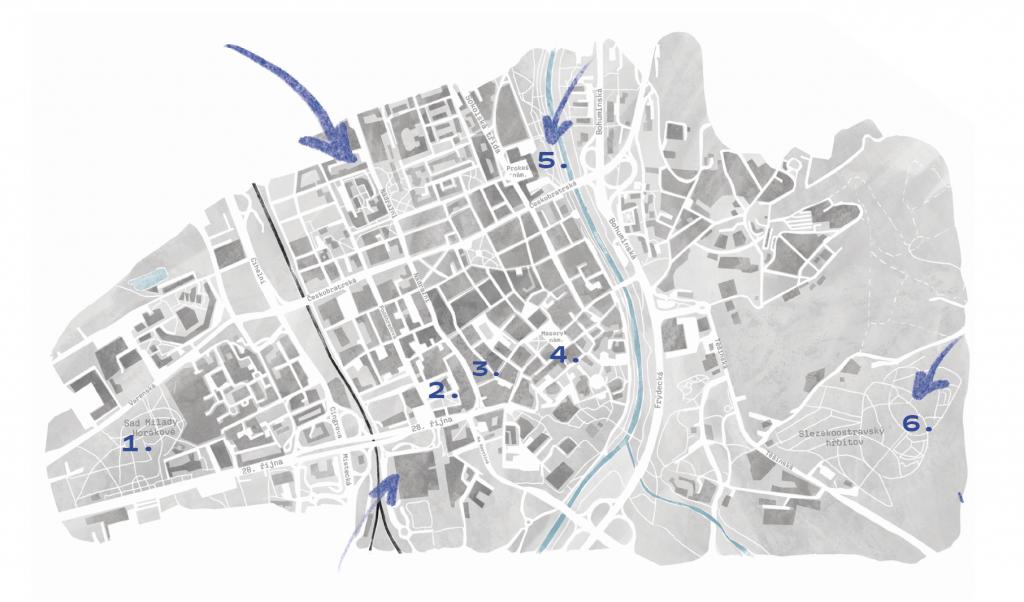
Ostrava in the time of Jan Prokeš
The journalist and social-democratic politician Jan Prokeš ranks among the most important figures in the history of Ostrava. Born in Černotín near Hranice on the Morava River, he rose through his own diligence to lead interwar Ostrava. He belonged to the intellectual elite of the Social Democratic Party, serving in both the Imperial Council and the Czechoslovak Parliament. For almost twenty years (1918–1935), he influenced and co-shaped the face of Ostrava as its commissioner and mayor. He initiated the creation of Greater Ostrava (1924) and set it on the path to becoming a modern metropolis.
Jan Prokeš played a key role not only in the field of construction but also in urbanism, social and health policy, and the arts. He supported the creation of architecturally significant buildings, including the New Town Hall, municipal savings banks, the House of Art, and the crematorium. He also championed numerous social projects, the establishment of several schools, the extension of the city hospital, and the construction of housing for the needy. He was an advocate for the women’s movement and contributed to the development of museums, bibliophily, music, visual arts, and theater.

1. The Dr. Milada Horáková Park Crematorium
(Vlastislav Hofman,
1893–1895)
Jan Prokeš was an advocate for cremation, and it was also for this reason that Ostrava acquired the first crematorium in Moravia. The architectural competition was won in 1919 by the project of architect Hofman. The resulting octagonal central building with a cubist dome reminiscent of a crystal was intended to become a symbol of atheism and modern society.

After the cemetery was moved to Slezská Ostrava, the crematorium was demolished in 1979. Nevertheless, several thousand Jews are still buried in the park, as well as victims of post-war settling of scores.
GPS (mapy.cz)
2. The House of Art Jurečkova 1750/9
(František Fiala a Vladimír Wallenfels, 1923–1926)
The lifelong art enthusiast Jan Prokeš also contributed to the construction of the House of Art. The realization by Jan Kotěra’s disciples built upon Kotěra’s work, with its austere brick architecture also referencing Dutch brick buildings.

Remarkable is the solution of the exhibition halls with cylindrical skylights providing diffused light suitable for exhibition purposes. In the local library, there are valuable bibliophilic prints, including books published by Jan Prokeš.
GPS (mapy.cz)
3. Moravian-Ostrava Savings Bank, Dr. Edvard Beneš Square 555/6
(Karel Kotas, 1926–1930)
After the establishment of Greater Ostrava, the savings bank built a new, representative palace in the city center, which, thanks to Jan Prokeš‘ intervention, also became home to the municipal library.

The board of directors of the savings bank, led by Prokeš, selected a design by the young Brno architect Karel Kotase in an architectural competition. Kotase’s design envisioned a two-winged building, with the library wing perpendicular to the rounded banking section, dominated by a two-story horseshoe-shaped hall with a gallery. A prestigious effect was achieved through the use of luxury materials in both the exterior and interior (granite, marble, rare woods), and Kotase also designed interior elements.
GPS (mapy.cz)
4. The Masaryk Square Museum in Ostrava 2/2
In the building of the original Moravian-Ostravian town hall, dating back to the 16th century, Jan Prokeš‘ career as the mayor of Ostrava began. After the construction of the New Town Hall, he, together with the archivist Alois Adamus, initiated the use of the Old Town Hall for the purposes of the city museum, to which Prokeš later bequeathed his library.

The collections also include a bookcase from the mayor’s office and Prokeš‘ death mask made by the sculptor Augustin Handzel.
GPS (mapy.cz)
5. The New Town Hall Prokešovo Square 1803/8
(Vladimír Fischer, František Kolář, Jan Rubý, 1923–1930)
After the establishment of Greater Ostrava, the city had to replace the inadequate town hall with a representative new building. Following an architectural competition, the city’s leadership, led by Jan Prokeš, approached the Brno architect Fischer and local builders Kolář and Rubý to develop a joint design.

The relatively conservative reinforced concrete tower was later replaced by a constructivist „lighthouse“ made of riveted steel structure with a glass cladding, which shifted the town hall building towards modern urban architecture. In the town hall, there is a memorial plaque to Jan Prokeš and a plaque commemorating the last rivet secured by Prokeš himself on August 29, 1930.
GPS (mapy.cz)
6. The grave of Jan Prokeš Central Cemetery Slezská Ostrava
(Jan Jírovec, 1937)
The city had a memorial gravestone made in the form of a simple granite cube in 1937 (two years after Prokeš‘ sudden death) and placed it in front of the crematorium building. After the cemetery was abolished and moved to Slezská Ostrava, Prokeš‘ gravestone was also relocated here at the end of the 1970s.

The urn containing the ashes, originally placed in the cube, was lost, and the gravestone thus became only a symbolic place. Moreover, its undignified placement serves as a reminder of the efforts of the communist regime to erase Jan Prokeš from the memory of the city.
GPS (mapy.cz)
editorial team / Ilona Rozehnalová, Romana Rosová
authors of the texts / Romana Rosová
photographs / Archiv města Ostravy
2023 © Fiducia